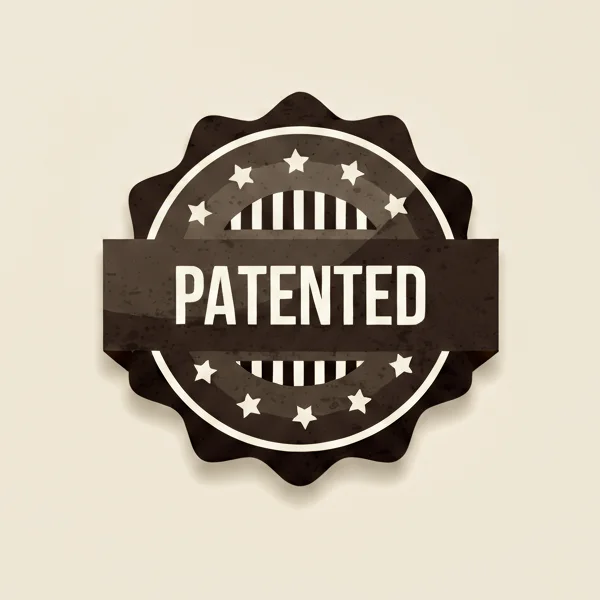
Table of contents
A Historical Problem: The Absence of Proof in Email
Email, despite its efficiency, convenience, and low cost, has historically not been efficient as proof from a legal perspective.
The original context of email, born in the 1970s, established it as an open and vulnerable system. Messages were sent in plain text, making it trivial to intercept, modify, or forge emails. Typically, emails are sent and received without any type of signature.
Therefore, normal email has the same probative value as any other private document and needs to be corroborated by other means. The great problem was being able to irrefutably certify what was communicated (full content), to whom it was addressed, and when it was sent and made available. If one wanted an email sent to constitute proof, it was necessary to certify it in some way.
eEvidence’s Technological Response: A Worldwide Patent
eEvidence solved this challenge through a technological innovation that is now protected by key patents at an international level.
Our core technology is covered by the same method, system, and computer program product for certifying that a sent email message has been received by a destination email server. These patents include the European Patent EP 2 805 455 B1 and the United States Patent US 9,742,722 B2.
The Crucial Difference: Proprietary Technology
While other services may attempt to address the lack of proof in email through different procedures, most of our competitors lack a proprietary technological model with this solid, patented probative value.
eEvidence’s patented innovation solves the drawbacks of previous methods. Previous methods often involved high costs, required emails to be written or sent from non-standard client software, required recipients to access from a different source, or required recipients to be aware that the communication was being recorded.
More importantly, a known previous method had the drawback of requiring specific adaptations to the sender’s email server, which unnecessarily could decrease the efficiency of the overall process and made the service incompatible in certain scenarios, such as when sending an email from BlackBerry devices through the RIM network.
Our patented system provides certification that is transparent and does not require particular functionalities or adaptations in conventional sender (102) or destination (106) email servers. The eEvidence certification email server (104) is the only agent that concentrates the particular features necessary to carry out the method transparently with respect to existing sending and destination servers.

The Mechanism of Irrefutable Proof
The patented method allows certifying that the destination email server has received the email message without the recipient (107) participating in the process or being aware of the provision of proof.
To achieve this, the technology uses an ingenious mechanism:
- Transparent Redirection: The email is sent using a character string in the destination address field that concatenates the recipient’s real address with a substring representing a wildcard domain name (e.g.,
recipient@destination.com.eevid.com). The Mail Exchange (MX) records of this wildcard domain point to the certification server (104). - Evidence Generation: Once received at the certification server (104), the sender is validated and the real destination address is extracted. Then, the system obtains an electronic fingerprint of the email message. This is achieved by applying a cryptographic hash function to a “consistent” version of the message, often generated as a PDF file. This ensures that the content has not been altered. If there are attachments, an electronic fingerprint of them is also obtained.
- Delivery Confirmation and Certification File Generation: The certification server (104) sends the message to the obtained destination address and receives from the destination email server (106) a confirmation of acceptance or rejection (such as a “250 OK” code in the SMTP transmission). Finally, a certification file or Evidence Report is generated that includes the email’s electronic fingerprint and the confirmation of the email’s acceptance or rejection by the destination server.
- Immutability and Long-Term Validity (LTV): The certification file is digitally signed and includes a timestamp issued by a Time Stamping Authority (TSA). This guarantees the integrity of the contained data, reliably establishes the creation date, and enables Long-Term Validation (LTV), maintaining the validity of the proof for many years.
The Legal Result: Full Probative Force
eEvidence’s patented technology converts a digital process into legally solid proof. The legal value of an electronic signature (or a registered email) depends on the evidence that demonstrates how it was signed or how it was sent.
By applying this method, a verifiable evidence document (such as the eEvid certificate) is generated that:
- Certifies the email’s content and sending.
- Demonstrates complete, audited traceability.
- Allows demonstrating that the identity, content, and consent were authentic and that the document was not altered after the action.
- Grants full probative force to the communication, which is fundamental in workplace (HR) or litigation scenarios.
In summary, eEvidence’s registered email, backed by patents US 9,742,722 B2 and EP 2 805 455 B1, guarantees verifiable proof of its content, sending, and delivery, offering the perfect balance between technical security and legal validity.
Ready to get started?
Contact us to share your business project or register now to start trying our services today
